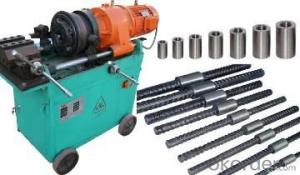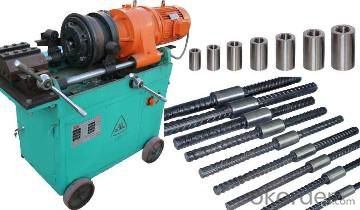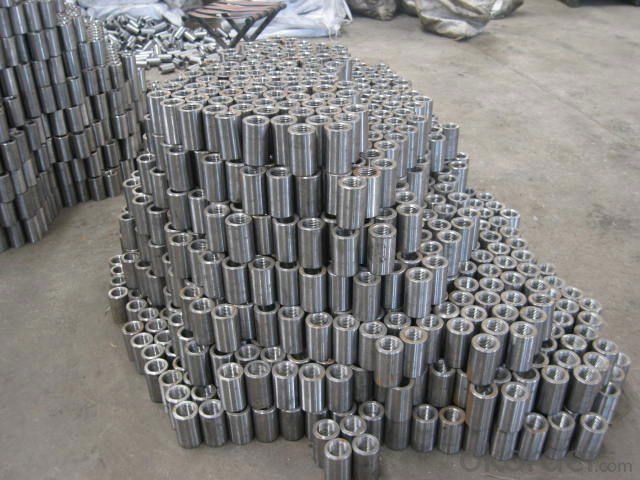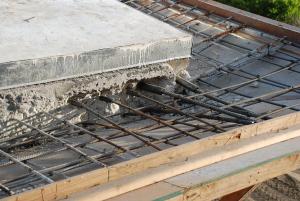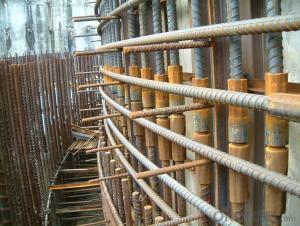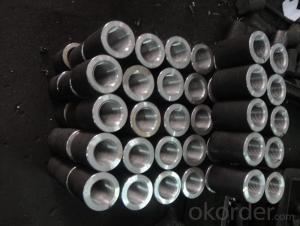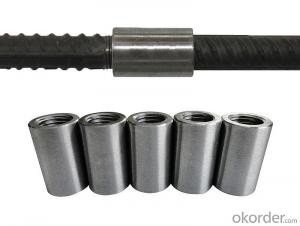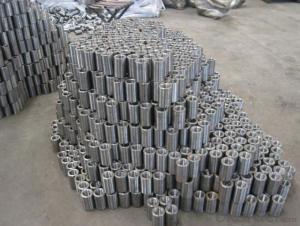Steel Coupler Rebar China Scaffolding Scaffolding Machine CNBM
- Loading Port:
- Shanghai
- Payment Terms:
- TT OR LC
- Min Order Qty:
- 50 pc
- Supply Capability:
- 10000000 pc/month
OKorder Service Pledge
OKorder Financial Service
You Might Also Like
Steel Coupler Rebar China Scaffolding Scaffolding Machine CNBM
1.Description:
Lapped joints are not always an appropriate means of connecting rebar. The use of Steel Rebar Couplers can simplify the design and construction of reinforced concrete and reduce the amount of reinforcement required.
The threaded steel coupler system is designed as a threaded reinforcement connection with 100% load transmission. The steel coupler rebar connection system is suitable for both static and dynamic load transmission in construction joints.
The coupler is designed as a threaded reinforcement connection for formed construction joints. Reinforcement work is normally carried out on both sides of the construction joint using lap joints or one side is anchored. The bar lengths are based on the structural analysis requirements of the building component and are calculated from anchorage and lap lengths.
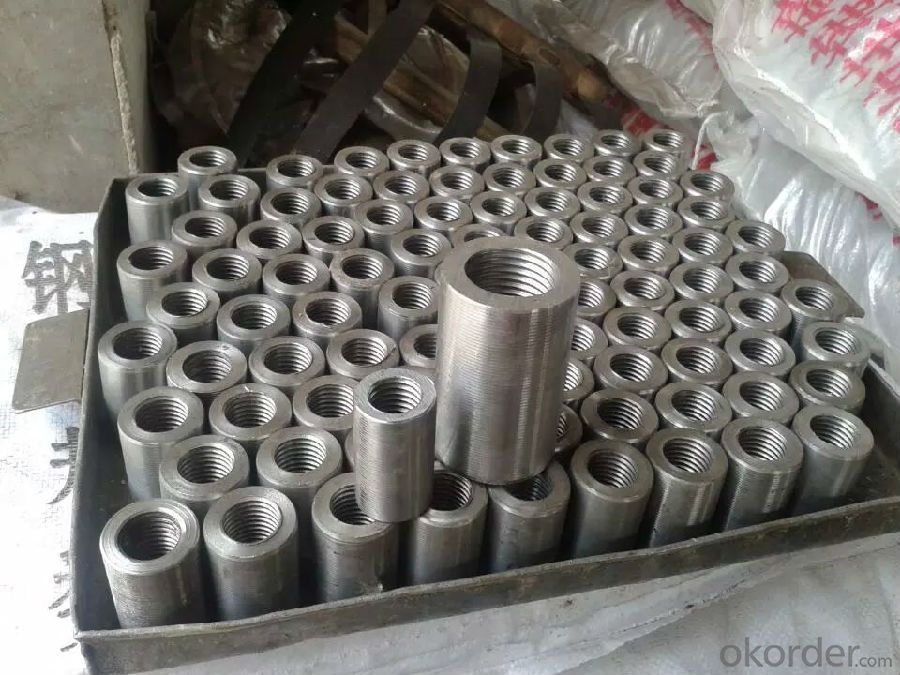

2.Advantages of Steel Coupler Rebar Lift Scaffolding Galvanized Scaffolding Tube with Low Price:
The coupler system provides the opportunity to connect rebars quickly, easily and cost effectively, even when large rebar diameters are used. This makes the steel coupler rebar range a logical extension to our rebendable CNBM reinforcement continuity system for rebars over 12 mm.
3.Available sizes of Steel Coupler Rebar Lift Scaffolding Galvanized Scaffolding Tube with Low Price:
14mm,16mm,18mm,20mm,22mmm,25mm,28mm,32mm,36mm,40mm
4.Delivery:
Delivery Term: FOB / CFR / CIF available.
Delivery Time: 15 days or less after order confirmed.
5.Why choose us?
Technical Expertise
Experienced Management
Stringent Quality Control
Exemplary Service
On-Time Delivery
Wide Product Range
Competitive Pricing
Huge branch network capable of catering worldwide
- Q: What are the different types of coatings used for steel formwork panels?
- There are several types of coatings commonly used for steel formwork panels, including epoxy, polyurethane, and galvanized coatings. Epoxy coatings provide excellent chemical resistance and durability, making them suitable for harsh environments. Polyurethane coatings offer good abrasion resistance and flexibility, making them ideal for formwork panels that require frequent reuse. Galvanized coatings provide corrosion protection by applying a layer of zinc on the steel surface, making them suitable for outdoor or high-moisture applications.
- Q: Can steel formwork be used for both small-scale and large-scale construction projects?
- Yes, steel formwork can be used for both small-scale and large-scale construction projects. Steel formwork is highly versatile and can be customized to meet the specific requirements of any construction project. It offers excellent durability and strength, making it suitable for withstanding the pressures exerted during large-scale projects. Additionally, steel formwork can be easily assembled and disassembled, allowing for efficient use on both small and large construction sites. Furthermore, steel formwork provides a smooth and consistent finish, ensuring high-quality results regardless of the scale of the project. Therefore, whether it is a small residential building or a large commercial complex, steel formwork can be effectively utilized to achieve the desired construction objectives.
- Q: How does steel formwork contribute to the overall speed of construction?
- Steel formwork contributes to the overall speed of construction in several ways. First and foremost, steel formwork is known for its high strength and durability, allowing it to withstand the pressure and weight of wet concrete. This means that construction teams can pour concrete into the formwork and proceed with the next steps of the construction process without having to wait for the concrete to fully cure or harden. As a result, this significantly reduces the overall construction time. Additionally, steel formwork is highly reusable, which further enhances the speed of construction. Unlike traditional timber formwork, which needs to be replaced after a few uses, steel formwork can be used multiple times without compromising its structural integrity. This eliminates the need for constant formwork preparation and allows construction crews to quickly move from one section to another, saving both time and resources. Moreover, steel formwork offers better precision and accuracy compared to other types of formwork. Its rigid structure ensures that the concrete is poured and shaped exactly as intended, minimizing the need for costly and time-consuming adjustments or corrections. This precision also enables construction teams to proceed with subsequent tasks, such as installing reinforcements or starting interior works, without delay. Furthermore, steel formwork is lightweight and easy to handle, making it quicker to assemble and dismantle. This ease of use allows construction crews to swiftly set up the formwork system, reducing the time spent on formwork installation. Similarly, when the concrete has sufficiently cured, the steel formwork can be easily disassembled and moved to the next construction site, further enhancing the speed of construction. In conclusion, steel formwork contributes to the overall speed of construction through its strength, durability, and reusability. Its precision and ease of handling also play a significant role in accelerating the construction process. With these advantages, steel formwork enables construction teams to complete projects more efficiently, saving time, and ultimately reducing costs.
- Q: What are the common accessories and attachments used with steel formwork systems?
- Some common accessories and attachments used with steel formwork systems include form ties, walers, soldiers, clamps, brackets, and chamfers. These accessories help provide stability, alignment, and support to the formwork during the concrete pouring and curing process.
- Q: Are there any specific considerations for using steel formwork in areas with high humidity?
- Yes, there are specific considerations for using steel formwork in areas with high humidity. High humidity can lead to increased moisture absorption by steel formwork, which can result in corrosion. To mitigate this, it is important to use steel formwork that has been properly treated with anti-corrosion coatings or galvanized to provide a protective barrier against moisture. Regular inspection and maintenance of the formwork is also crucial in high humidity areas to identify any signs of corrosion and take appropriate measures to prevent its progression. Additionally, ensuring proper ventilation and airflow around the formwork can help reduce the level of humidity and minimize moisture absorption.
- Q: Can steel formwork be used for projects with limited formwork transportation options?
- Projects with limited formwork transportation options can utilize steel formwork. Steel formwork is renowned for its durability, strength, and reusability, making it an excellent selection for projects that necessitate transportation over extensive distances or challenging terrains. Unlike traditional wood formwork, steel formwork can endure transportation challenges without experiencing damage or deformation. Moreover, steel formwork is lightweight in comparison to other formwork materials like concrete or timber, which facilitates transportation even in areas with restricted transportation options. The lightweight attribute of steel formwork not only reduces transportation expenses but also enables easier handling and on-site installation. Furthermore, steel formwork can be effortlessly dismantled and reassembled, making it suitable for projects that often require formwork transportation. The modular design of steel formwork allows for convenient transportation and reconfiguration, ensuring efficient transportability to various project sites as necessary. In conclusion, steel formwork is a versatile and pragmatic solution for projects with limited formwork transportation options. Its durability, lightweight nature, and ease of disassembly and reassembly make it an appropriate choice for projects that mandate formwork transportation over extensive distances or challenging terrains.
- Q: What are the different types of safety precautions required when working with steel formwork?
- When working with steel formwork, some of the different types of safety precautions that are required include wearing appropriate personal protective equipment (PPE) such as hard hats, safety glasses, and steel-toed boots to protect against falling objects and accidental injuries. It is also important to ensure that the formwork is properly secured and stable to prevent collapse or accidents. Workers should be trained on safe lifting and carrying techniques to avoid strains and sprains. Additionally, regular inspections of the formwork should be conducted to identify any potential hazards or defects that need to be addressed.
- Q: What are the considerations when designing steel formwork for retaining walls?
- When it comes to designing steel formwork for retaining walls, it is crucial to take several important factors into account: 1. Structural stability is of utmost importance. The steel formwork must be able to withstand the lateral pressure exerted by the retained material. To achieve this, it is essential to incorporate adequate thickness, reinforcement, and bracing. 2. The formwork should also have the necessary load capacity to support the weight of the concrete and any additional loads during construction. It should be able to withstand these loads without any deformation or failure. 3. Durability is another key consideration. Retaining walls are exposed to various environmental conditions, so the steel formwork must be designed to resist corrosion, rust, and other forms of deterioration. This can be achieved by using corrosion-resistant steel or applying protective coatings. 4. The design should also prioritize ease of construction. The steel formwork should be structurally sound yet easy to install and remove. This will save time and labor during construction. 5. Flexibility is essential as retaining walls can have different geometries and dimensions. The steel formwork should be flexible enough to accommodate these variations. Adjustable connections or modular components can be used to achieve this flexibility. 6. Safety is of utmost importance. Proper consideration should be given to fall protection, access, and working platforms to ensure the safety of workers during construction. 7. Lastly, cost-effectiveness should be optimized. The design should minimize material usage and labor costs while still meeting the required strength and durability. Standard sizes and components, as well as reusable elements, can help achieve this goal. By considering these factors, designers can ensure that the steel formwork for retaining walls is not only structurally sound and durable but also efficient and cost-effective.
- Q: Can steel formwork be used in earthquake-prone areas?
- Yes, steel formwork can be used in earthquake-prone areas. Steel is a strong and durable material that can withstand the forces exerted during an earthquake. It has high tensile strength and can resist deformation or collapse under seismic loads. Steel formwork systems are designed to be rigid and stable, providing a safe and reliable solution for constructing buildings and structures in earthquake-prone regions. Additionally, steel formwork is reusable, making it a cost-effective option for construction projects in these areas. It is important, however, to ensure that the steel formwork is designed and installed according to the specific seismic requirements and regulations of the particular area to ensure optimal safety.
- Q: What are the considerations when designing steel formwork for underground structures?
- Several factors must be taken into account when designing steel formwork for underground structures. Firstly, the formwork must be able to withstand the pressure exerted by the surrounding soil. Underground structures face significant lateral and vertical loads, so the formwork must resist these forces without deforming or collapsing. Steel, with its high strength and rigidity, is an ideal material for this purpose. Secondly, the formwork should be designed for easy installation and removal. Underground construction presents challenges such as limited access and confined working spaces. Therefore, the formwork system should be modular and adjustable to fit different shapes and sizes of underground structures. This would allow for efficient construction and minimize the time and effort required for formwork installation and removal. Additionally, the formwork design should consider the ease of concrete pouring and curing. Proper placement of tie rods, formwork joints, and other structural elements is crucial to ensure smooth and even flow of concrete throughout the structure. The formwork system should also provide for ventilation and drainage to prevent water accumulation or air pockets that could compromise the structure's integrity. Moreover, safety is of utmost importance in designing steel formwork for underground structures. The formwork system should incorporate safety features like guardrails and access platforms to ensure a secure working environment for construction workers. The design should also minimize manual handling by utilizing lifting and handling equipment, reducing the risk of accidents or injuries during formwork installation and dismantling. Lastly, the formwork design should consider the project's budget and schedule constraints. While steel formwork may be more expensive than other types, cost-effective design solutions should be explored without compromising safety and performance. The formwork system should also be designed for reusability, allowing for multiple applications and reducing overall project costs. In conclusion, designing steel formwork for underground structures involves careful consideration of factors like strength, durability, ease of installation, concrete pouring, safety, and cost-effectiveness. By addressing these considerations, designers can ensure the successful construction of underground structures that meet project requirements and withstand the challenges of underground environments.
Send your message to us
Steel Coupler Rebar China Scaffolding Scaffolding Machine CNBM
- Loading Port:
- Shanghai
- Payment Terms:
- TT OR LC
- Min Order Qty:
- 50 pc
- Supply Capability:
- 10000000 pc/month
OKorder Service Pledge
OKorder Financial Service
Similar products
Hot products
Hot Searches
